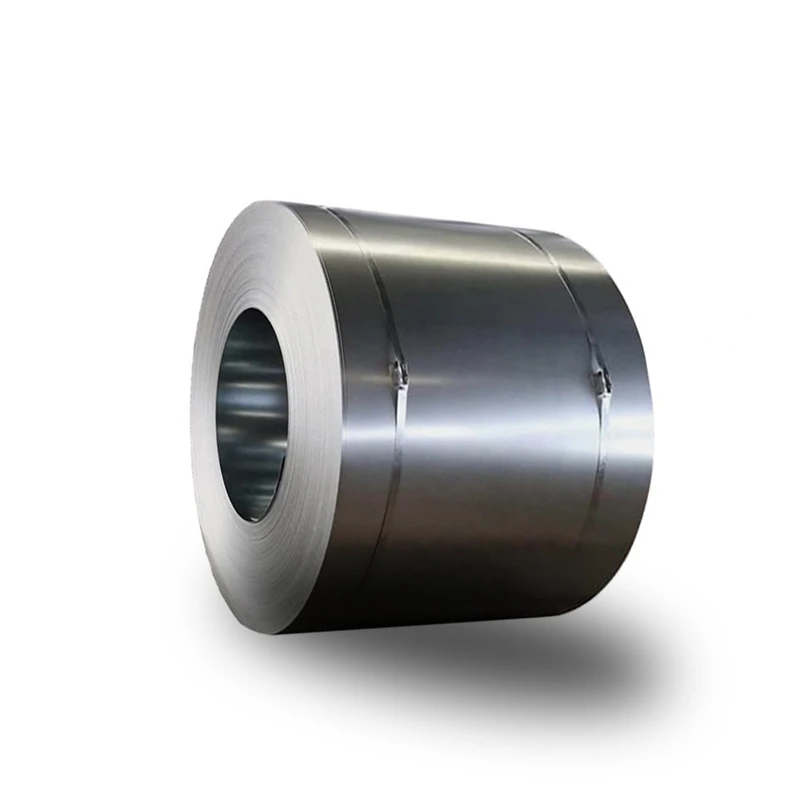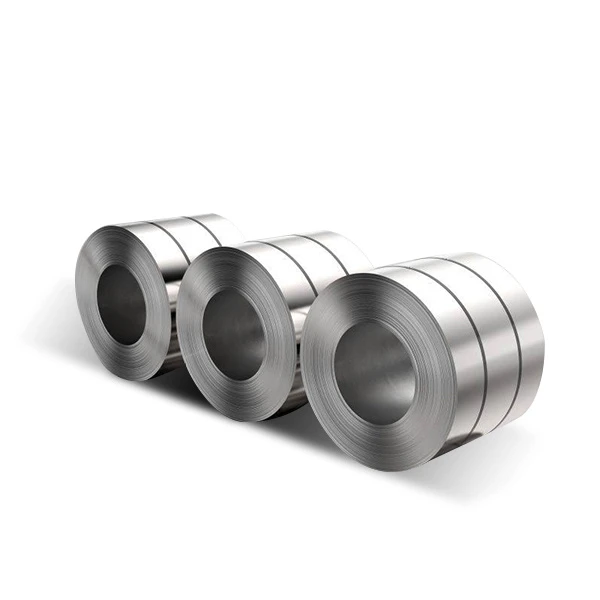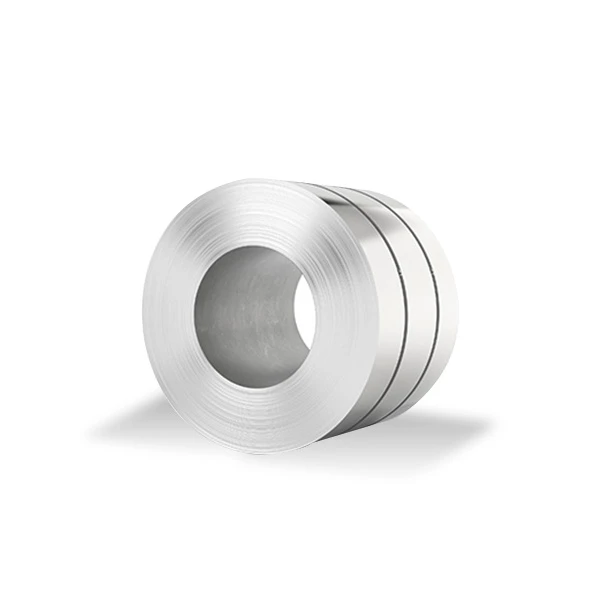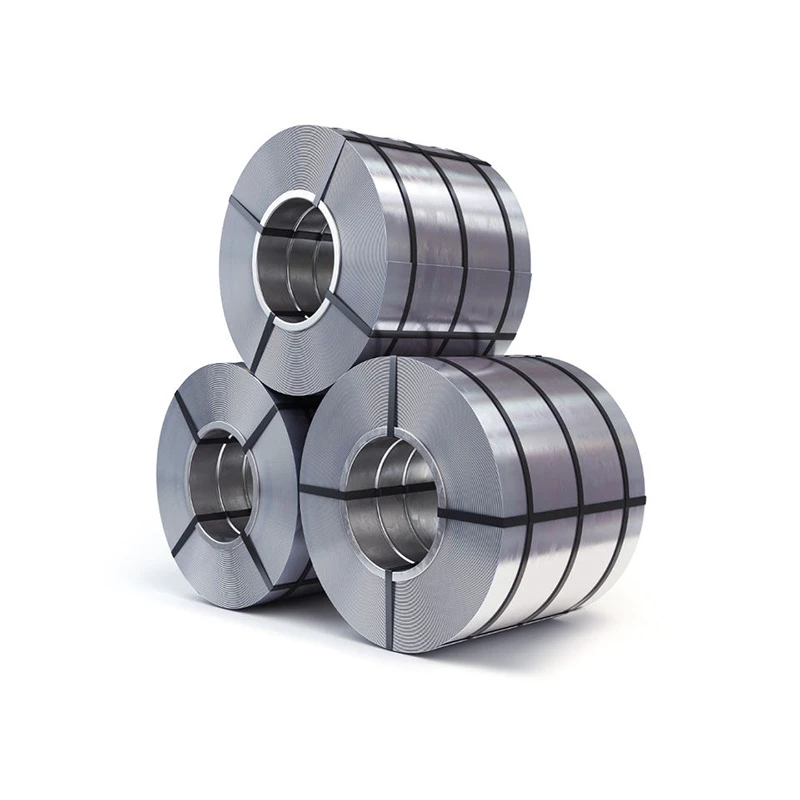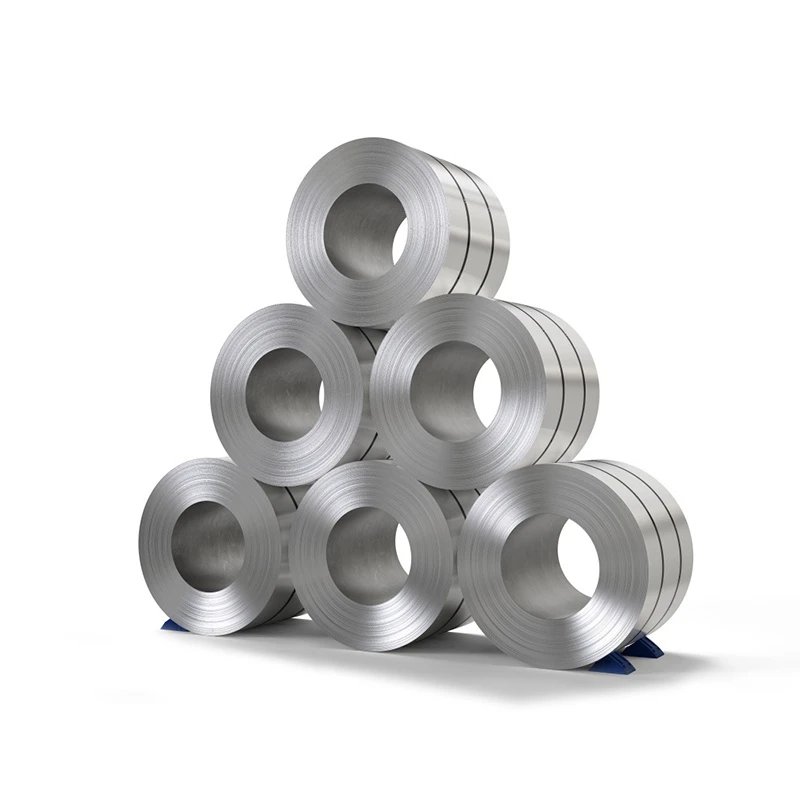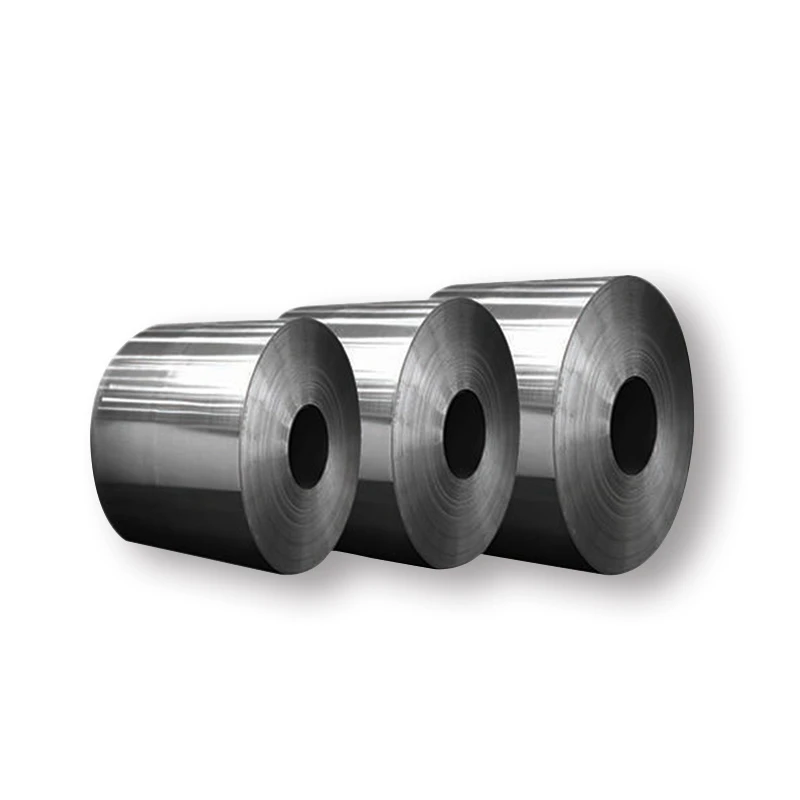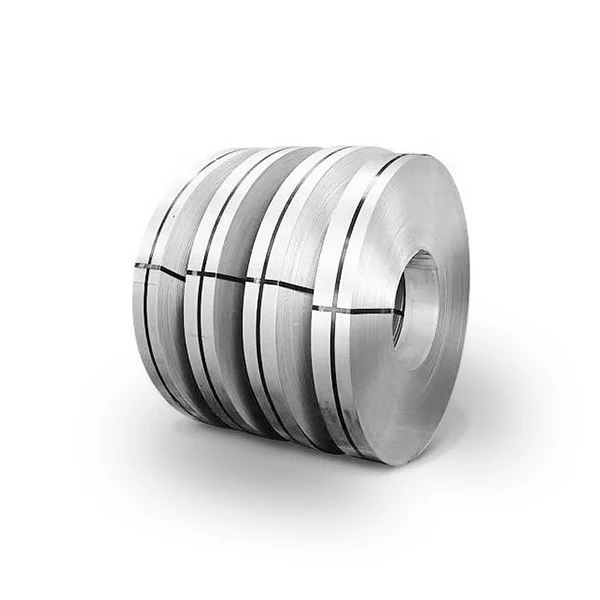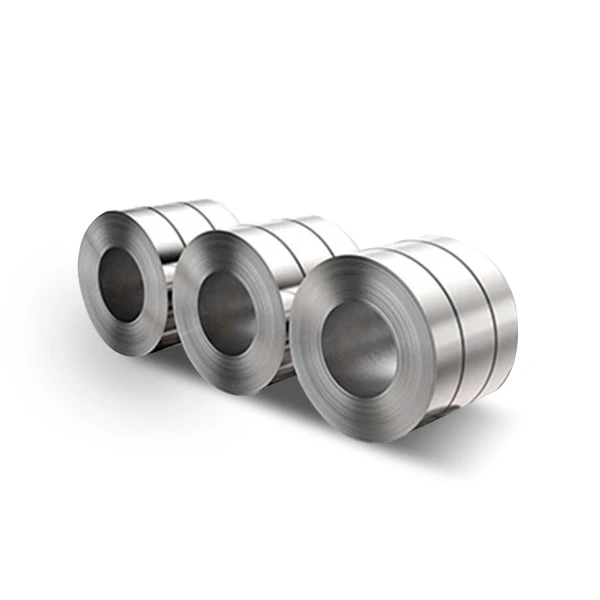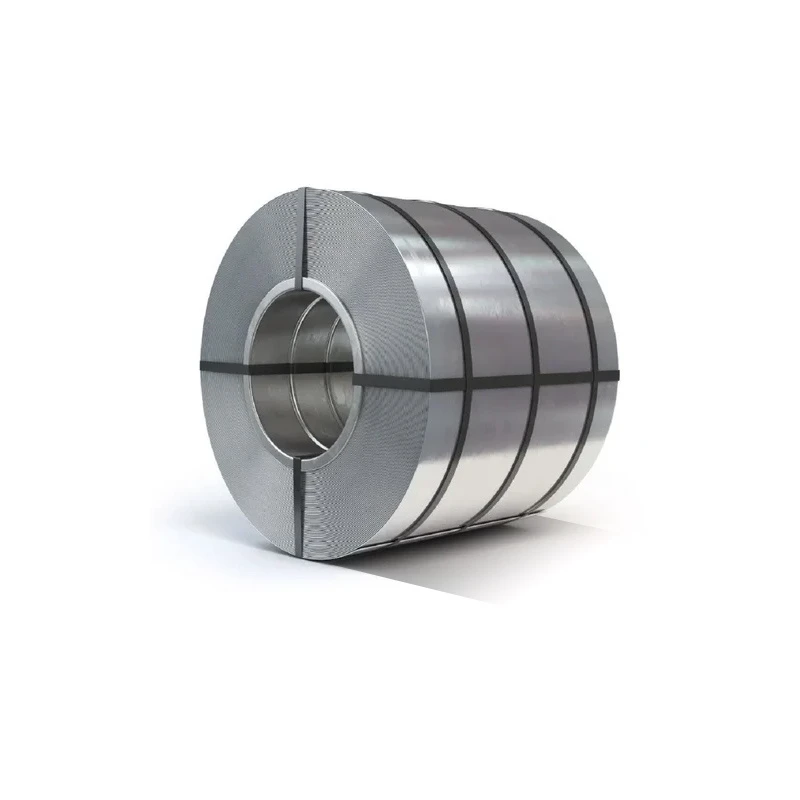
CATEGORIES
FEATURED PRODUCTS
302 Stainless Steel Coil
We offer this product and related grades with 100% factory direct pricing and free quotes available within 24 hours.
APPLICATION SCENARIOS

OUR ADVANTAGE

Certificate of Honor

PARTNER

Our Factory

302 Stainless Steel (UNS S30200) is an austenitic chromium-nickel stainless steel, very similar in composition to 304, but typically with a slightly higher carbon content (up to 0.15% maximum, compared to 0.08% for 304). This higher carbon level contributes to increased strength and hardness in the annealed condition and especially when cold worked. It maintains good corrosion resistance, excellent formability, and good weldability. Historically, 302 was a widely used “general-purpose” austenitic stainless steel, and while 304 has largely superseded it due to better availability and slightly improved corrosion characteristics (particularly in welding due to 304’s lower carbon), 302 still finds niche applications where its specific properties are beneficial, such as in springs and certain cold-drawn wire products. Like other austenitic stainless steels, 302 is generally non-magnetic in its annealed state but becomes increasingly magnetic after cold working.
Key Properties of 302 Stainless Steel
The higher carbon content of 302 is its distinguishing feature, impacting its mechanical properties and suitability for specific uses.
Enhanced Strength and Hardness
- Higher Tensile Strength: Due to its slightly higher carbon content, 302 typically exhibits higher tensile strength and hardness in the annealed condition compared to 304.
- Excellent Cold Workability: 302 responds very well to cold working. It can be significantly strengthened through processes like drawing, rolling, or forming, achieving very high tensile strengths, especially in wire and strip forms for applications like springs.
- Good Toughness and Ductility: Despite its higher strength, 302 maintains good ductility and toughness, particularly in its annealed state, allowing for various forming operations like bending, stamping, and deep drawing.
Good General Corrosion Resistance
- Similar to 304: In many mild to moderately corrosive environments, 302 offers corrosion resistance comparable to 304 stainless steel. It performs well in atmospheric conditions, fresh water, and a wide variety of organic and inorganic chemicals.
- Applications: It’s effective for use in the food, dairy, and chemical industries for general purpose applications.
- Limitations: Like 304, it lacks molybdenum, making it susceptible to pitting and crevice corrosion in chloride-rich environments (e.g., saltwater) or highly aggressive chemical solutions. Its higher carbon content can also make it slightly more prone to sensitization (intergranular corrosion) if welded and not subsequently annealed, though this is less of a concern for thinner gauges.
Good Heat Resistance
- Oxidation Resistance: 302 offers good resistance to oxidation and scaling in continuous service up to approximately 871°C (1600°F).
Weldability
- Good Weldability (with considerations): 302 is generally weldable by all common fusion and resistance welding processes. However, its higher carbon content means it’s more susceptible to sensitization (chromium carbide precipitation) in the heat-affected zone during welding than lower-carbon grades like 304L. For applications where post-weld corrosion resistance is critical, particularly in corrosive environments, a post-weld annealing treatment might be necessary, or a lower-carbon alternative like 304L may be preferred.
Magnetic Properties
- Non-Magnetic in Annealed State: In its annealed condition, 302 stainless steel is non-magnetic.
- Magnetic After Cold Work: It becomes noticeably magnetic after cold working, a common characteristic of many austenitic stainless steels when their microstructure transforms due to deformation.
Detailed Specifications: Dimensions and Parameters
302 Stainless Steel Coil is produced to various industry standards, primarily ASTM A240/A240M, and is available in dimensions suitable for its diverse applications, often with an emphasis on thinner gauges for spring and forming uses.
| Parameter | Standard Range |
| Thickness | 0.1mm – 6mm (0.004 in – 0.236 in) |
| Width | 1000mm – 2000mm (39.37 in – 78.74 in) |
| Length | Coil form (continuous length) |
| Surface Finish | 2B, BA, No.1, Polished Finishes (e.g., No.4, HL) |
| Temper | Annealed, 1/4 Hard, 1/2 Hard, Full Hard (cold worked) |
| Edge Condition | Mill Edge, Slit Edge |
| Standard | ASTM A240/A240M, ASTM A666, AMS 5516 |
Note: The availability of specific thicknesses, widths, and tempers may vary. For precise specifications, it’s recommended to consult with a supplier.
Chemical Composition of 302 Stainless Steel
The specific chemical composition of 302 stainless steel defines its properties, particularly its slightly elevated carbon content.
| Element | Weight Percentage (%) |
| Carbon (C) | ≤0.15 |
| Silicon (Si) | ≤1.00 |
| Manganese (Mn) | ≤2.00 |
| Phosphorus (P) | ≤0.045 |
| Sulfur (S) | ≤0.030 |
| Chromium (Cr) | 17.0 – 19.0 |
| Nickel (Ni) | 8.0 – 10.0 |
| Iron (Fe) | Balance |
The slightly higher Carbon content (up to 0.15%) distinguishes it from 304.
302 Stainless Steel vs. Other Stainless Steel Grades: A Comparative Look
Comparing 302 to other austenitic stainless steels highlights its position as a high-strength, cold-formable grade, often considered an alternative to 304.
| Feature | 302 | 304 | 304L | 301 |
| Stainless Steel Family | Austenitic | Austenitic | Austenitic | Austenitic |
| Carbon Content | Higher (up to 0.15%) | Lower (up to 0.08%) | Very Low (up to 0.03%) | Moderate (up to 0.15%) |
| Strength (Annealed) | Higher | Good | Good | Good |
| Strength (Cold Worked) | Excellent (for springs, wire) | Good | Good | Excellent (very high work hardening) |
| Corrosion Resistance (General) | Good (similar to 304) | Excellent | Excellent | Good (slightly lower Cr/Ni) |
| Weldability | Good (susceptible to sensitization if not annealed post-weld for critical applications) | Excellent | Excellent (no sensitization) | Good (prone to sensitization) |
| Magnetic After Cold Work | Becomes Magnetic | Can become slightly magnetic | Can become slightly magnetic | Becomes Magnetic |
| Cost | Moderate | Low | Low | Moderate |
| Typical Use | Springs, wire forms, fasteners, stampings, certain food/dairy applications | Kitchen sinks, appliances, general fabrication | Tanks, piping, heavy gauge welded components | Springs, structural parts (high strength/cold form) |
While 304 has become the industry standard for many general-purpose applications due to its lower carbon and excellent balance of properties, 302 remains valuable for specific uses where its enhanced strength from cold working, particularly for springs and wire products, is a primary requirement.
Key Industries and Applications for 302 Stainless Steel Coil
302 Stainless Steel Coil is utilized in various industries, especially where its combination of good corrosion resistance and high strength (particularly after cold working) is advantageous.
| Industry | Typical Applications |
| Spring Manufacturing | Spring wire, springs (e.g., compression, extension, torsion springs) where high strength and corrosion resistance are needed. |
| Fasteners | Bolts, nuts, screws, washers, rivets (for applications requiring higher strength than 304, and where welding isn’t primary). |
| Wire & Cable | Wire rope, mesh, woven screens, cables (due to its ability to be cold drawn to high strengths). |
| Automotive | Formed components, fasteners, spring clips, retainers. |
| Food & Beverage | Dairy equipment, ice cream molds, food processing equipment (for components requiring a balance of strength and corrosion). |
| Medical Devices | Some medical instruments and components requiring strength and corrosion resistance. |
| Aerospace | Certain cryogenic applications and components requiring high strength. |
| General Fabrication | Stamped parts, moldings, certain structural components where cold-formed strength is beneficial. |
Global Price Overview: 302 Stainless Steel Coil
The price of 302 Stainless Steel Coil is generally comparable to or slightly higher than 304, primarily due to the specific processing and demand for its specialized properties (like spring temper wire). Pricing is influenced by global demand, the cost of its raw materials (nickel, chromium), energy prices, and the specific producer and form (e.g., cold-drawn wire will be more expensive per pound than annealed sheet). The figures below are illustrative and subject to market fluctuations. For the most accurate and current pricing, please contact us directly.
| Region / Factor | Price Range (USD per Metric Ton) – Illustrative | Notes |
| Asia | $2,500 – $4,800 | Often competitive; prices vary by specific form (e.g., annealed coil vs. spring temper wire). |
| Europe | $2,800 – $5,500 | Reflects regional production costs, quality standards, and alloy surcharges. |
| North America | $3,000 – $5,800 | Influenced by domestic demand, import dynamics, and raw material costs. |
| Raw Material Cost (Nickel, Chromium) | High Impact | Fluctuations in nickel and chromium prices are significant factors in 302’s cost. |
| Order Volume | Discounts for Bulk | Larger purchase quantities may receive more favorable per-unit pricing. |
| Form & Temper | Varies Significantly | Cold-drawn wire or spring temper coils will be more expensive than annealed coils. |
Disclaimer: These are approximate price ranges and should not be considered as definitive quotes. For precise pricing and lead times, please reach out to our sales team.
Frequently Asked Questions (FAQs)
Here are answers to some of the most common questions about 302 Stainless Steel Coil.
Q1: What is the main difference between 302 and 304 stainless steel?
A1: The main difference is that 302 stainless steel has a slightly higher carbon content (up to 0.15% max) compared to 304 (up to 0.08% max). This higher carbon gives 302 increased strength and hardness, especially after cold working, making it ideal for applications like springs. However, it also makes 302 more susceptible to sensitization (intergranular corrosion) if welded and not post-weld annealed, a concern less prevalent with 304.
Q2: Is 302 stainless steel magnetic?
A2: In its annealed condition, 302 stainless steel is generally non-magnetic. However, it becomes increasingly magnetic after cold working, which is a common characteristic of many austenitic stainless steels that undergo work hardening.
Q3: What kind of corrosion resistance does 302 stainless steel offer?
A3: 302 stainless steel offers good general corrosion resistance, comparable to 304 stainless steel, in mild atmospheric conditions, fresh water, and various mild chemicals. However, it’s not recommended for highly corrosive environments, particularly those with high chloride concentrations (like saltwater), due to its susceptibility to pitting and crevice corrosion.
Q4: Can 302 stainless steel be used for springs?
A4: Yes, 302 stainless steel is one of the most widely used stainless alloys for manufacturing springs and spring wire. Its ability to achieve very high strength and hardness through cold drawing, combined with good corrosion resistance, makes it an excellent choice for various spring applications.
Q5: Does 302 stainless steel require post-weld heat treatment?
A5: For critical applications or when the welded component will be exposed to moderately corrosive environments, post-weld annealing of 302 stainless steel is often recommended to mitigate the risk of intergranular corrosion (sensitization) due to its higher carbon content. For less critical applications or thinner sections, it might be used in the as-welded condition, but it’s important to consider the potential for reduced corrosion resistance in the heat-affected zone.







